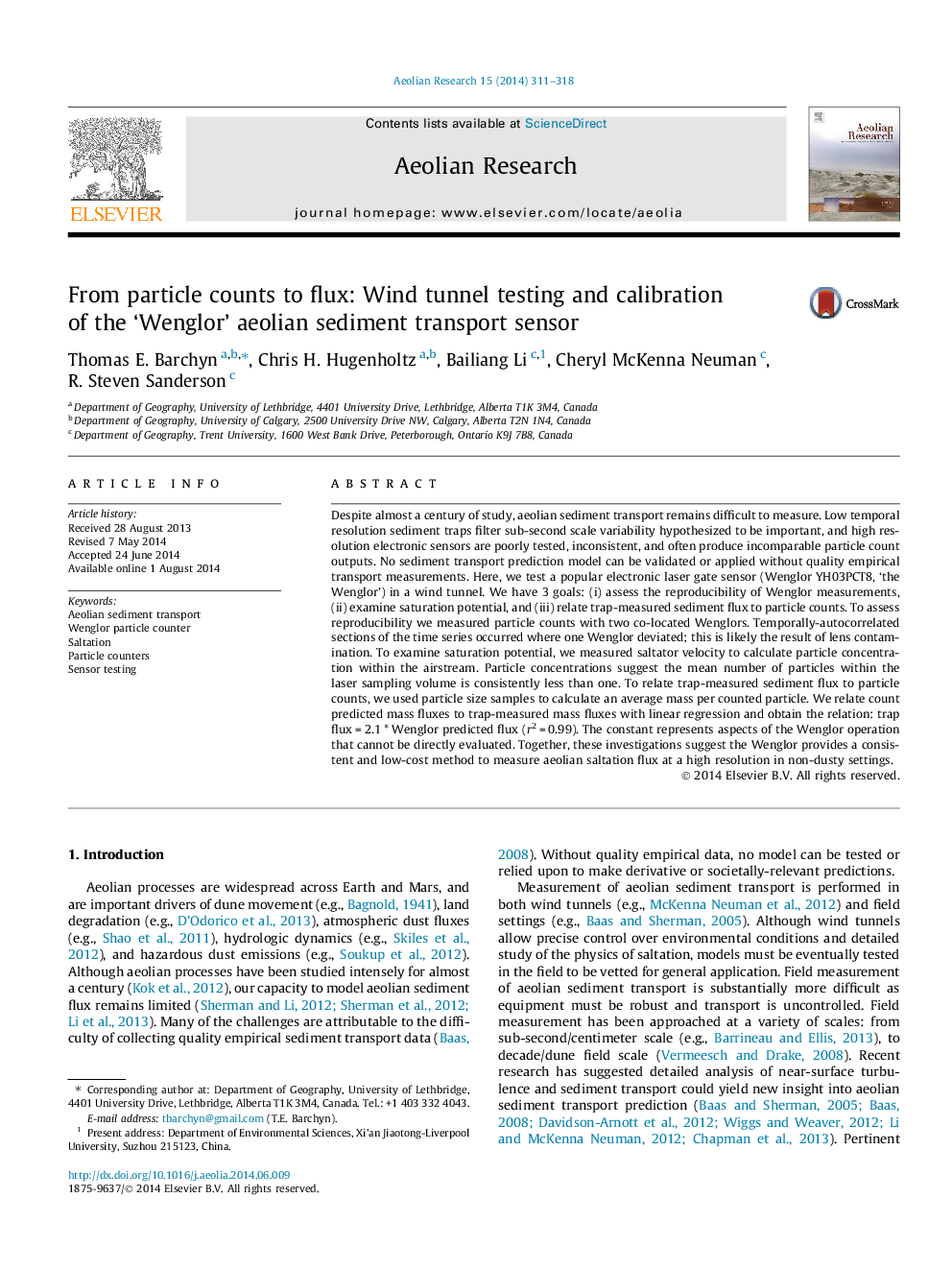| کد مقاله | کد نشریه | سال انتشار | مقاله انگلیسی | نسخه تمام متن |
|---|---|---|---|---|
| 6426381 | 1634112 | 2014 | 8 صفحه PDF | دانلود رایگان |
- We report on 3 tests of the Wenglor YH03PCT08 saltation sensor.
- Reproducibility: occasional deviation in co-located sensor response.
- Saturation: minimal within common particle concentrations.
- Conversion from particle counts to flux shows linearity and should be reliable.
Despite almost a century of study, aeolian sediment transport remains difficult to measure. Low temporal resolution sediment traps filter sub-second scale variability hypothesized to be important, and high resolution electronic sensors are poorly tested, inconsistent, and often produce incomparable particle count outputs. No sediment transport prediction model can be validated or applied without quality empirical transport measurements. Here, we test a popular electronic laser gate sensor (Wenglor YH03PCT8, 'the Wenglor') in a wind tunnel. We have 3 goals: (i) assess the reproducibility of Wenglor measurements, (ii) examine saturation potential, and (iii) relate trap-measured sediment flux to particle counts. To assess reproducibility we measured particle counts with two co-located Wenglors. Temporally-autocorrelated sections of the time series occurred where one Wenglor deviated; this is likely the result of lens contamination. To examine saturation potential, we measured saltator velocity to calculate particle concentration within the airstream. Particle concentrations suggest the mean number of particles within the laser sampling volume is consistently less than one. To relate trap-measured sediment flux to particle counts, we used particle size samples to calculate an average mass per counted particle. We relate count predicted mass fluxes to trap-measured mass fluxes with linear regression and obtain the relation: trap flux = 2.1 * Wenglor predicted flux (r2 = 0.99). The constant represents aspects of the Wenglor operation that cannot be directly evaluated. Together, these investigations suggest the Wenglor provides a consistent and low-cost method to measure aeolian saltation flux at a high resolution in non-dusty settings.
Journal: Aeolian Research - Volume 15, December 2014, Pages 311-318
